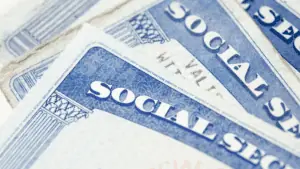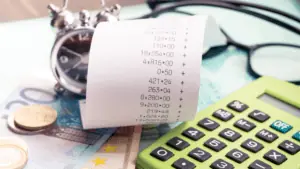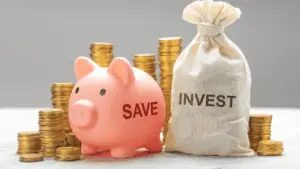In the past, when I’ve been stressed out or troubled about some impending problem, I’ll sometimes glance over at my French bulldog, Louie . . . and think. I think how it must be really awesome to be a Louie. He is a good dog, great with the kids, but there’s not much worrying going on in the ol’ dog-bed. I’ve never really seriously considered it, but the magnitude of the current pandemic has given me pause to reconsider. I don’t have to tell anyone there is a great deal of fear and worry going on. We are all searching for ways to cope with something that the majority of us have never experienced. Other than the fact that Louie’s human family is oddly around a lot more interrupting some needed rest, Louie is in happy oblivion until the next time he hears the can-opener.
As I talk to folks within our community, the common concern I’m hearing – not surprisingly – is what the future is going to look like. We observe with gratitude and awe as people in the health care, transportation, grocery and other key industries are on the frontlines, making heroic efforts to help all of us. The rest of us need to be doing whatever we can to help and support our fellow citizens who are providing essential services and goods to help us through this crisis. It is difficult to know precisely what the future holds. About the only thing we can say with 100% accuracy is that there will be a future. In the financial services industry, so much today seems to be about panic and precipitous market drops.
I can tell you that in my private practice, we have spent timeless hours helping folks design and deploy sound financial systems to help mitigate situations such as the virus, and to plan for the inevitable future that includes the good, bad, and neutral.
I have not found a credible financial expert yet who will tell you they can predict exactly how the future financial markets will behave. Most importantly, I have found no credible expert who can tell us what the true bottom or floor of the market will be. Frankly, that is called market timing and that system rarely works. But what I can share with you is what many financial analysts and experts are considering as they search for the bottom of the current market. You see, in times like these, data is critical. Just “holding on” does not seem to be an appropriate option here.
So, first and foremost is the virus itself. What we are looking for here is when the virus infection rates actually peak and begin to decline. At the time I’m writing this column, this is still an open question. However, many institutional investment firms, like ours, are noting and following the infection rate and using it as an indicator, just as they would a price-to-earnings ratio. In past situations such as SARS, stocks hit their floor in the weeks and days following the slowing of the infection rate.
There is also a great deal of technical analysis being done by Institutional Research Providers (IRPs) within the financial services industry. Analysis such as previous market floors and bear markets, volatility, and market sentiment. These IRPs study each of these concepts using historical quantitative data from previous extreme bear markets, including the “Great Recession” of 2008. By way of example, the current S&P index is right around 2300 and many investment firms and technical analysts are looking at the “support” floor being somewhere in the 2150 to 2300 range. The key thing to watch is whether the market can stabilize as it hits that floor. As of now, there is no guarantee that there will be enough support to maintain those levels. Traditionally when a market can hit their floor and maintain support, it can stabilize the market. But I caution you to make sure you have tested your financial system since many analysts will say the United States is in financial uncharted territory.
Lastly . . .fear. It is a key component of any significant bear market. Never before have we seen the markets give back so much in so little time. In a matter of days, not years, not months, not weeks . . . days. In a matter of days, U.S. stocks lost 35 percent from their peak in mid-February with no floor in sight. Corporate bond prices plummeted at least 17 percent, even those issued by higher-quality companies. Heck, even prices of municipal bonds, a refuge for risk-averse investors, have also slumped — a Vanguard fund holding these obligations is down 15 percent. Even U.S. Treasury bonds, the ultimate safe haven, are off their peaks.
Folks, this is unprecedented. The counterpoint to this is that not all fear in the financial markets is necessarily negative at this point. As the fear grows, it is driving the country to some of the most dramatic steps ever taken in limiting the day-to-day interaction between people. With fear resulting in the drastic “stay-at-home” orders currently affecting over a fifth of the population, this will eventually slow the infection rate. While it’s possible that things might get quite a bit worse before it gets better, a short-term drastic shutdown maybe the best antidote for the economy.
As Bill Ackman, billionaire investor and founder of Pershing Square Capital said, “We need to shut it down now (in reference to non-essential activity). Capitalism does not work in an 18-month shutdown, it does work in a 30-day shutdown.” Furthermore, we have never seen the levels that the federal government will go to in order to rescue the economy. Whether you philosophically agree or disagree with drastic shutdowns or the amount of federal aid won’t be as important to your own portfolio as what level of national calm that can be brought about.
In fact, a recent Wall Street Journal article notes that it’s an inescapable fact that the broader economic activity, as measured in Gross Domestic Product (GDP), will likely have its worst quarter since the inception of the modern measurement tool in 1958. Never before have we seen the world come to such a screeching halt.
So, yes, these are dramatic and difficult times. We are in the thick of it now and many analysts are predicting this is going to get much worse before things improve. But this is not the time for us to just sit and passively watch our financial well-being evaporate.
Nope, not me.
Now is the time for you to analyze your financial system. Now is the time for you to understand your risk budget. And it is certainly time for you to understand the behavior of your system over the past 4 weeks and to question yourself if that behavior is your standard for the future. When the markets were down over 35% with no floor in sight . . . where were you? Did you just “ride it out?” What was your downside risk mitigation system, do you have one? Should you?
Folks, now is the time to be vigilant and stay alert, because you deserve more!
Have a great week. Please be safe out there.
Jeff Cuttr, CPA/PFS is President of Cutter Financial Group, LLC, an SEC Registered Investment Advisor with offices in Falmouth, Duxbury, Mansfield & Southlake, TX. Jeff can be reached at jeff@cutterfinancialgroup.com.
This article is intended to provide general information. It is not intended to offer or deliver investment advice in any way. Information regarding investment services is provided solely to gain a better understanding of the subject of the article. Different types of investments involve varying degrees of risk. Therefore, it should not be assumed that future performance of any specific investment or investment strategy will be profitable. Market data and other cited or linked-to content in this article is based on generally-available information and is believed to be reliable. Cutter Financial does not guarantee the performance of any investment or the accuracy of the information contained in this article. Cutter Financial will provide all prospective clients with a copy of Cutter Financial’s Form ADV 2A and applicable Form ADV 2Bs. Please contact us to request a free copy via .pdf or hardcopy. Insurance instruments offered through CutterInsure, Inc.







